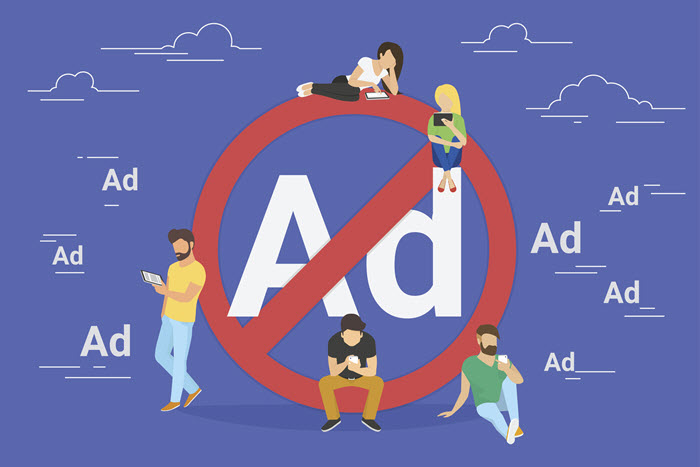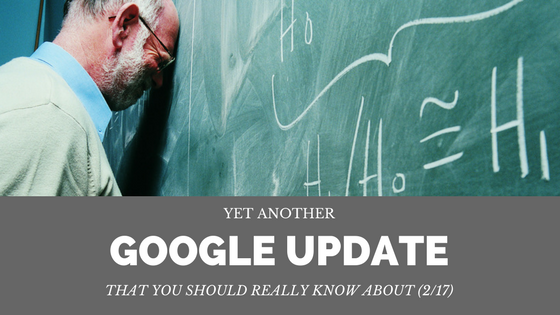
In February of 2018, Chrome (the most popular web browser) will start automatic ad blocking. Chrome will ban four types of ads on desktop, and eight on mobile devices.
Yes. Chrome will stop showing ads to users. No Ad Blocking software required.
These ad types include:
- pop up ads
- ads that automatically play video and audio
- pre-stitial ads with countdown clocks
- large sticky ads that cover over 30% of the screen – and continue to cover the screen even as you scroll down the page
Instead of targeting specific ads, Chrome will control blocking on a site-by-site basis. And this isn’t limited to blocking just the ad types mentioned above. Non-compliant sites risk having all advertisements on their website blocked.
The Coalition for Better Ads controls which sites have blocked ads. They manage the whitelist of sites considered ‘compliant’ with ad experience standards.
Want to get on the white list? You have to be certified as meeting a set of standards.
According to Gregg Keiser, reporting on ComputerWorld:
“In the first two months of the project – the start date will be revealed in January, the CBA said – disreputable ads must not account for more than 7.5% of all page views on a certified site. The cutoff falls after that, so that after six months, ads can comprise just 2.5% of a site’s page views. …
Sites that do not volunteer to become certified by the CBA, or are judged by the organization to be non-compliant- effectively all sites but those on the whitelist – will have ads in the banned category blocked. Even a single objectionable ad will trigger a block by Chrome.
Will Your Ads Be Blocked?
The new blocking approach impacts ad publishers – websites featuring ad placements. The big question is:
How will this impact advertisers?
One way to stay protected, of course, is not to produce or buy ad units in any of the blocked ad types. But the ad type itself isn’t the only issue. The actual ad experience is important as well. For instance, ads that create what Google considers an ‘abusive’ experience. According to Google:
“Abusive experiences are designed to be misleading. An experience is abusive if it meets any of the following conditions:
- It auto-redirects the page without user action.
- It misleads or tricks the user into interacting with it. Examples include ads or other elements that:
- Resemble system or site warnings or error messages.
- Simulate messages, dialog boxes, or request notifications.
- Depict features that do not work.
- Display a “close” button that does anything other than closing the element when clicked.
- Take the user to an ad landing page or other content when they click anywhere outside of the user-visible border of the element.”
What is a Bad Ad Experience?
Search Engine Roundtable compiled a list of Google’s ‘bad ad experiences.’ These include:
- Autoplaying Video Ad with Sound
- Flashing Animated Ad
- Pop-up ads
- Prestitial ad with countdown
- Large sticky ad at bottom of screen
- Pop-up Ad and Prestitial Ad
- Ad density higher than 30%
- Postitial Ad with Countdown
- Full Screen Scrollover Ad
- Large Sticky Ad
- It promotes, hosts, or links to malware or unwanted software that may be installed on the user’s machine.
- It is “phishing” for users’ information.
- It auto-redirects the page without user action.
- It misleads or tricks the user into interacting with it. Examples include:
- Ads that resemble system or site warnings or error messages.
- Ads that simulate messages, dialog boxes, menus, or request notifications.
- Hosted ads that are indistinguishable from other content.
- Ads depicting features that do not work.
- Ads with a transparent background.
- Ads with an image that is segmented, an image that contains multiple copies of itself within the ad, or images that appear to be more than one ad.
- Ads with moving and clicking arrows.
- Ads with a “close” button that does not close the ad but instead clicks the ad, or clicks through to other content.
- Ads where clicking anywhere outside of the user-visible border of the ad leads to an ad landing page.
How Can I Make Sure My Ads Aren’t Blocked?
This shift adds another layer of complication to your media planning. Most digital display ad buys take place on programmatic networks. How can you make sure your ads aren’t published on banned sites?
Media planners and buyers must ensure publishers are white-listed and compliant. And that takes time.
Here at Knox Marketing, we’re already having these discussions. We’re making sure that our client’s ads are in the best locations, at the right time, to reach their target audience. And working with our partners to make sure they aren’t blocked.
Wondering if your media plan is at risk? Give us a call at 330-929-7700 and find out how we can help you.



